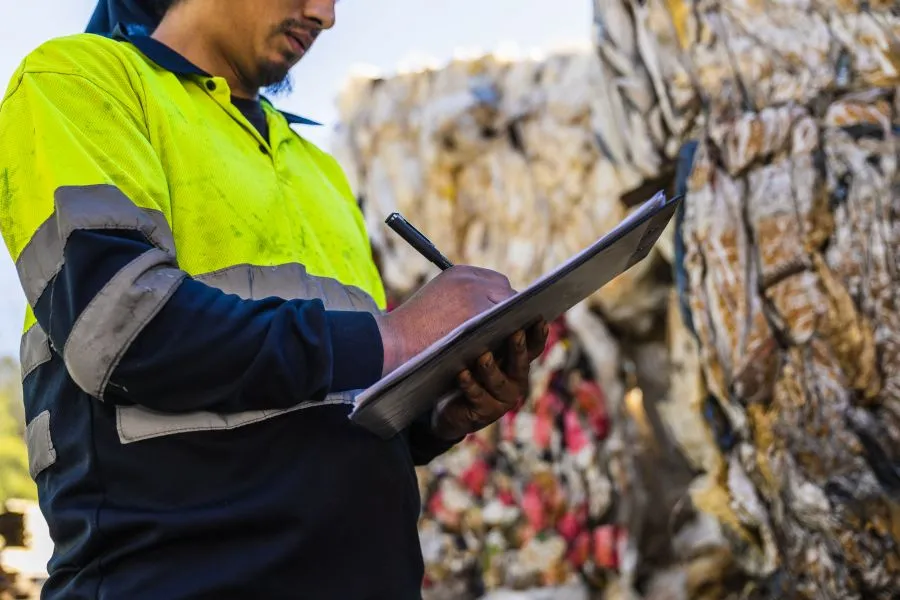FMCG companies with poor plastic targets risk billions in litigation and compliance costs
Key takeaways
- A joint Planet Tracker and MSCI Institute report finds FMCG firms with poor plastic management face rising financial and legal risks.
- Over half of packaged food companies lack packaging targets, while 88% have no clear strategy for microplastic reduction.
- Experts urge investors to flag weak commitments, avoid greenwashing, and push for transparent, science-based packaging goals.

A new study by think tank Planet Tracker and the Morgan Stanley Capital International (MSCI) Institute has found that FMCG companies with weak plastic reduction-related practices are at a higher risk of financial issues, including lawsuits, compliance costs, reputational damage, and potential share price declines.
The authors urge investors and companies to take a proactive role in tackling plastic pollution, identifying potential legal, regulatory, or ESG risk. The report recommends that companies set clear goals for circular packaging solutions and incorporate the financial risks associated with microplastic pollution into their ESG assessments.
The “Microplastics – Macro Risks & Financial Cost of Inaction” report analyzes over 450 global companies, revealing the financial risks of poor plastic management.
Packaging Insights speaks to Thalia Bofiliou, senior investment analyst at Planet Tracker, about how companies can mitigate plastic pollution risks and present strong strategies to industry stakeholders.
“Companies must move proactively: they have to set and achieve robust, company-wide packaging targets, including substantial cuts to virgin plastic use, speed up the progress on reducing plastic waste, adopt science-based goals, and disclose material use and performance transparently.”
Regulatory compliance
The research also points to rising regulatory frameworks, such as EPR schemes and single-use plastic bans, as factors that influence poor plastic management, leading to legal advice.
“The FMCG industry suffers from increased litigation and regulatory risks, as governments respond with measures like EPR, packaging taxes, and bans on certain materials,” says Bofiliou.
The research emphasizes that many companies are failing to establish targets to increase the recycled material content of their packaging.
She adds: “We further found a significant accountability gap. More than half of companies in the packaged food sector (55%) have set no packaging-related targets whatsoever. In restaurants, that figure jumps to 72%. And even among those with some commitments, very few have developed comprehensive, company-wide strategies to address the issue.”
Transparent practices
 The research points to rising regulatory frameworks as factors that influence poor plastic management.Moreover, the research says 88% of companies “lack clear strategies” for reducing packaging waste and microplastic pollution, while the few that do focus only on specific product lines or packaging types.
The research points to rising regulatory frameworks as factors that influence poor plastic management.Moreover, the research says 88% of companies “lack clear strategies” for reducing packaging waste and microplastic pollution, while the few that do focus only on specific product lines or packaging types.
Bofiliou explains that companies are also increasingly going back on plastic policy commitments.
She adds: “FMCG companies that set and maintain ambitious, transparent packaging goals, and avoid backsliding, will be far better positioned to reduce legal, regulatory, and financial risks as the global plastic crisis heats up.”
Bofiliou spotlights Unilever and Coca-Cola as two companies that have recently gone back on sustainability promises.
Unilever revised its virgin plastic reduction target from 50% by 2025 down to 33% by 2026 and Coca-Cola dropped its recycled material target from 50% to 35–40% and pushed the target year from 2030 to 2035.
Avoiding greenwashing
The report also finds that companies are facing rising legal costs due to litigation, estimated to reach between US$20 billion and US$100 billion by 2030.
Bofiliou says that to avoid greenwashing lawsuits, companies must provide measurable and auditable commitments and ensure transparent reporting around packaging practices and waste management.
“Relying on unclear or selective promises can trigger legal and reputational consequences,” she says, noting an ongoing lawsuit from Los Angeles County, US, against PepsiCo, which alleges the company misled consumers about the recyclability of its plastic packaging.
“If successful, this case could lead to substantial financial liabilities and reputational damage. The indirect costs of such cases can be just as material, including potential credit rating downgrades, insurance premium hikes, increased compliance expenditures, and reputational harm.”
Reputational risks
Mismanagement of plastic pollution strategies can also lead to reputational risks that can damage a company’s value and relationship to consumers, explains Bofiliou.
 Mismanagement of plastic pollution strategies can lead to reputational risks that damage a company’s value and consumer trust, explains Bofiliou.“Consumers and civil society actors are increasingly attuned to packaging-related impacts. Narrow or selective commitments are viewed as greenwashing, eroding brand trust and triggering ESG-driven investor scrutiny and divestment.”
Mismanagement of plastic pollution strategies can lead to reputational risks that damage a company’s value and consumer trust, explains Bofiliou.“Consumers and civil society actors are increasingly attuned to packaging-related impacts. Narrow or selective commitments are viewed as greenwashing, eroding brand trust and triggering ESG-driven investor scrutiny and divestment.”
To reduce these risks, Bofiliou stresses that companies adopt targets that have been identified as credible by leading sustainability programs, such as the Ellen MacArthur Foundation’s Global Commitment and WWF’s Resource program.
Recognizing red flags
To avoid investing in mismanaged practices, investors should “scrutinize companies for several red flags,” says Bofiliou.
These include narrow, selective commitments; frequent target changes or delays; a lack of disclosure on material mix; pilot projects without scaling plans; and missing independent verification.
She adds: “When these patterns exist, it is a signal that the company is not taking the risk seriously and that means elevated financial exposure.”
The report recommends that investors conduct intensive reviews and integrate the risk of plastic and microplastics into ESG assessments.
“Investors should engage with companies directly on targets and transparency, pushing for science-based, company-wide packaging goals with measurable recycled content targets and circular economy strategies,” concludes Bofiliou.











